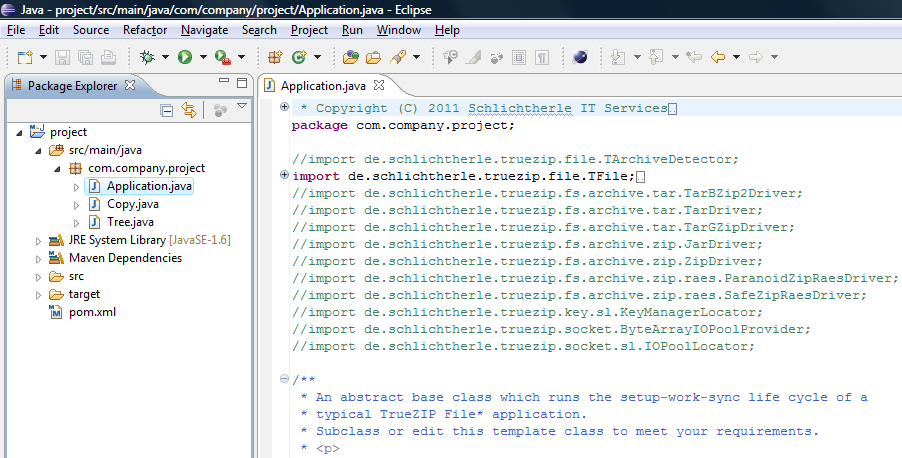

- GET FILE PATH FROM INPUTSTREAM HOW TO
- GET FILE PATH FROM INPUTSTREAM UPDATE
- GET FILE PATH FROM INPUTSTREAM CODE
Use File.readText() function that returns entire content of file as a String.Ĭontent of file is printed to the console. You can also read whole content of the file as a single string. File.readText() : returns entire content of file as a single string You can access the list using for loop to read each line of the file.Ĭontent of file is printed to the console. Use File.readLines() function to get all the lines in the text file as List of Strings. File.readLines() : returns entire content of file as a List of lines Use for loop to iterate over the byte array and access the contents of file byte by byte.Ĭontent of file is printed to the console. This byte array contains all the file contents. Use File.readBytes() function to get ByteArray. File.readBytes() : returns entire content of file as a ByteArray Var content = ins.readBytes().toString(faultCharset())Ĭontent of file is printed to the console. read contents of IntputStream to String * Created by * Example program to read contents of a file in Kotlin to InputStream Read Content of File to InputStream and then to a String Then you can read bytes from the stream and convert it to a String. File.inputStream() returns a new InputStream for the file. File.inputStream() : Read contents of file to InputStream * Created by * Example program to read contents of a file in Kotlin line by lineĬontent of file is printed to the console. Use File.forEachLine function and read each line of the file. Prepare file object with the location passed as argument to File constructor. File.forEachLine() : Read a file line by line in Kotlin Welcome to Kotlin Tutorials in Learn Kotlin easily here.Ĭontent of file is printed to the console. Val text:List = bufferedReader.readLines() Val bufferedReader = file.bufferedReader() Val file = File("input"+parator+"contents.txt") 
In the area relevant to the type of data you are importing, click Select a File. In the drop-down list, select Administration.
* Created by * Example program to read contents of a file in Kotlin into BufferedReader How do you update a CSV file To run the update: In the toolbar, click your username. Kotlin Program – example.kt import java.io.File Use BufferedReader.readLines() to read the content of the file.File.bufferedReader returns a new BufferedReader for reading the content of the file.Prepare file object with the location of the file passed as argument to File class constructor.
File.readText() : To read contents of file to a single Stringįile.bufferedReader() : How to read contents of a file into BufferedReader.
 File.readLines() : To read lines in file to List of String. File.readBytes() : To read contents of file to ByteArray. File.inputStream() : To read contents of file to InputStream. File.forEachLine() : To read a file line by line in Kotlin. File.bufferedReader() : To read contents of a file into BufferedReader. The properties file used in the sample examples is named as test.Example programs to read contents of a file in Kotlin There are various ways to load a properties file in java. It is not mandatory but a good practice so that property files may be recognized easily. The properties file is generally a file with a. This value shall be used by our application to perform its normal operation, thus, making it configurable and user-friendly.Īll the properties or the configuration to be externalized are collected in a properties file and is loaded at application startup.
File.readLines() : To read lines in file to List of String. File.readBytes() : To read contents of file to ByteArray. File.inputStream() : To read contents of file to InputStream. File.forEachLine() : To read a file line by line in Kotlin. File.bufferedReader() : To read contents of a file into BufferedReader. The properties file used in the sample examples is named as test.Example programs to read contents of a file in Kotlin There are various ways to load a properties file in java. It is not mandatory but a good practice so that property files may be recognized easily. The properties file is generally a file with a. This value shall be used by our application to perform its normal operation, thus, making it configurable and user-friendly.Īll the properties or the configuration to be externalized are collected in a properties file and is loaded at application startup. Therefore, it is recommended to externalize these values and provide them in the form of properties or key-value pairs where the key is the string used in the code and is fixed while its value can be varied and set by the user. Further, this change would require a re-build of code. If given in code, they cannot be changed without developer intervention. One user may want his logs to be generated in “myLogs” folder, another user may want the logs to be generated in “appLogs” folder.

Since these values vary from system to system and user to user, their values can not be pre-fixed. A typical java application uses some values which are not suitable to be given in code such as log generation path, output location, configuration file path, timeout values etc.








 0 kommentar(er)
0 kommentar(er)
